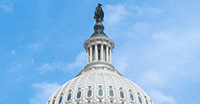‘Secret Shopper’ Study Highlights Barriers Faced By Patients Seeking Buprenorphine
 |
The findings were based on a “secret shopper” study, in which callers to physicians, nurse practitioners, and physician assistants listed on the Buprenorphine Practitioner Locator website posed as a patient covered by Medicaid or without insurance in the District of Columbia, Maryland, Massachusetts, New Hampshire, Ohio, and West Virginia.
“In six [jurisdictions] with the highest burden of opioid-overdose mortality in the United States, 38% to 46% of callers who reported current heroin use were denied an appointment from a buprenorphine prescriber, and only 50% to 66% of [prescribers] booking a new appointment allowed buprenorphine induction at the first visit,” wrote senior author Michael L. Barnett, M.D., M.S., of the Harvard T.H. Chan School of Public Health and Brigham and Women’s Hospital and colleagues. “Nevertheless, among those who were accepting new patients, wait times were not long, suggesting an underused capacity for buprenorphine treatment in areas with great need.”
From July to November 2018, callers attempted to contact 1,076 publicly listed buprenorphine prescribers twice, posing as a 30-year-old woman who was using heroin and seeking to start buprenorphine-naloxone treatment. During one call, scheduling staff was told the patient was covered by Medicaid; in the other, scheduling staff was told the patient was uninsured but willing to pay for care. For each prescriber, the callers made three attempts during business hours to reach a live scheduler.
From the initial sample of 1,076 prescribers in six jurisdictions, 530 were excluded for reasons such as invalid contact information, they were inactive prescribers, or they requested information such as a Medicaid number that the caller could not provide. The callers were also unable to reach a live scheduler for 77 prescribers, while 89 prescribers were reached once but not for both scenarios, resulting in a final sample of 849 contacts for 469 prescribers. The authors found that an appointment was offered in 233 of 432 contacts (54%) by the Medicaid callers and 258 of 417 (62%) by the uninsured–self-pay callers. The median wait time to the first appointment was six days for Medicaid callers and five days for uninsured–self-pay callers.
Additionally, 27% of Medicaid callers and 41% of uninsured–self-pay callers were offered an appointment with the possibility of buprenorphine prescription at the first visit. The median wait time from first contact to possible induction was eight days for Medicaid callers and seven days for uninsured–self-pay callers.
The researchers noted several limitations of the study, including callers’ focus on publicly listed buprenorphine prescribers in five states and the District of Columbia, which limits the generalizability of the findings.
Nonetheless, Barnett and colleagues concluded, “[E]very day without treatment carries an elevated risk for escalating opioid use and overdose. Patients must be in active opioid withdrawal to initiate buprenorphine treatment safely, which makes the timing of induction critical.”
For related information, see the Psychiatric News article “What Psychiatrists Can Do to Address the U.S. Opioid Crisis.”
(Image: iStock/Gajus)






